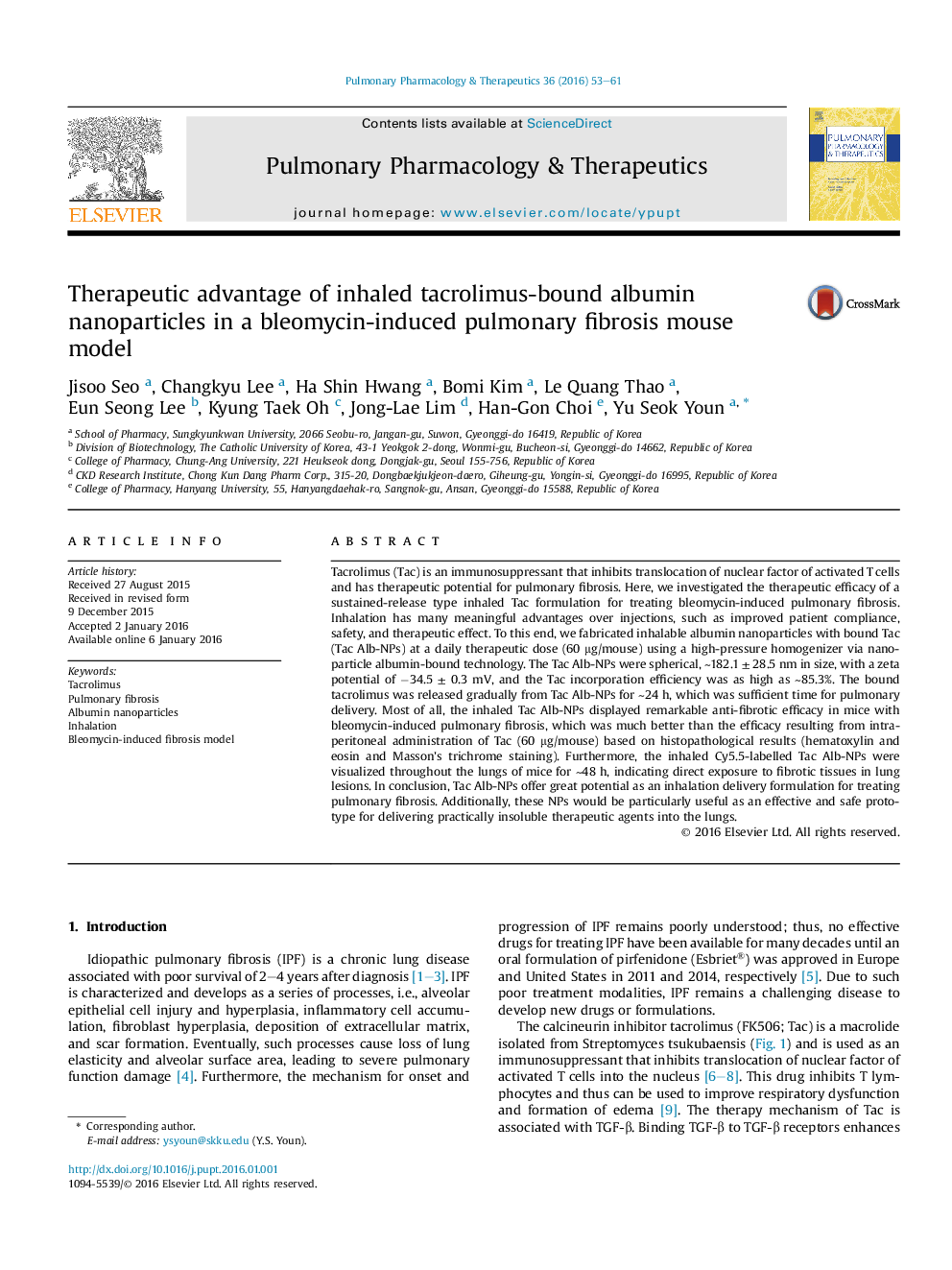| Article ID | Journal | Published Year | Pages | File Type |
|---|---|---|---|---|
| 2566962 | Pulmonary Pharmacology & Therapeutics | 2016 | 9 Pages |
Tacrolimus (Tac) is an immunosuppressant that inhibits translocation of nuclear factor of activated T cells and has therapeutic potential for pulmonary fibrosis. Here, we investigated the therapeutic efficacy of a sustained-release type inhaled Tac formulation for treating bleomycin-induced pulmonary fibrosis. Inhalation has many meaningful advantages over injections, such as improved patient compliance, safety, and therapeutic effect. To this end, we fabricated inhalable albumin nanoparticles with bound Tac (Tac Alb-NPs) at a daily therapeutic dose (60 μg/mouse) using a high-pressure homogenizer via nanoparticle albumin-bound technology. The Tac Alb-NPs were spherical, ∼182.1 ± 28.5 nm in size, with a zeta potential of −34.5 ± 0.3 mV, and the Tac incorporation efficiency was as high as ∼85.3%. The bound tacrolimus was released gradually from Tac Alb-NPs for ∼24 h, which was sufficient time for pulmonary delivery. Most of all, the inhaled Tac Alb-NPs displayed remarkable anti-fibrotic efficacy in mice with bleomycin-induced pulmonary fibrosis, which was much better than the efficacy resulting from intraperitoneal administration of Tac (60 μg/mouse) based on histopathological results (hematoxylin and eosin and Masson's trichrome staining). Furthermore, the inhaled Cy5.5-labelled Tac Alb-NPs were visualized throughout the lungs of mice for ∼48 h, indicating direct exposure to fibrotic tissues in lung lesions. In conclusion, Tac Alb-NPs offer great potential as an inhalation delivery formulation for treating pulmonary fibrosis. Additionally, these NPs would be particularly useful as an effective and safe prototype for delivering practically insoluble therapeutic agents into the lungs.
